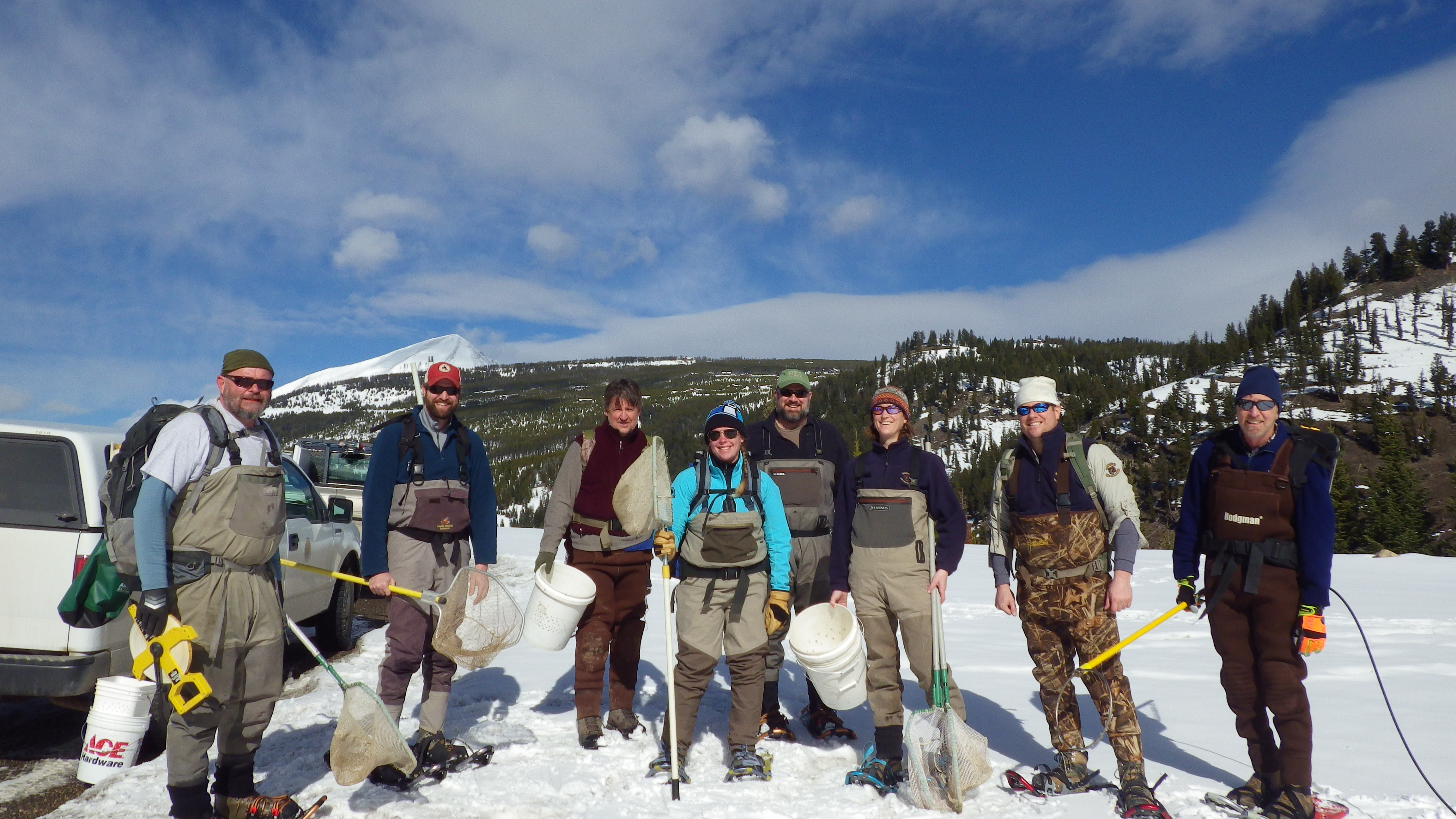The Gallatin River Task Force began collecting routine water quality data in the Upper Gallatin River Watershed in 2000. This data is used to assess and track the long-term health of rivers and streams, plan for restoration projects, and identify and monitor unforeseen events. The 2016 Upper Gallatin River Watershed Water Quality Report outlines data trends observed between 2000 and 2016 and summarizes data collected after the wastewater effluent spill at the Yellowstone Club in March 2016.
Routine Monitoring
Indicators of river health, including temperature, pH, and dissolved oxygen, suggest cold and clean water in the Upper Gallatin River Watershed. Elevated levels of nitrate, algae, chloride, and E. coli have been measured at several monitoring sites within the West Fork Watershed. Nitrate concentration was highest in the fall and winter when nutrient uptake by plants and algae is low. Potential human sources of nitrate include fertilizer, land application of treated wastewater effluent on the Big Sky Golf Course and Big Sky Community Park, effluent from privately owned septic systems, and storm water runoff.
Chloride concentration was elevated during the winter throughout the watershed with the highest concentration in April, when snow melts and flows into rivers and streams as runoff. Wastewater and road salt likely contribute to elevated chloride levels. E. coli levels were highest in the warm months when temperatures are conducive to bacteria growth. E. coli sources include wastewater and animal waste. Turbidity was low throughout the year, except for spring runoff, when water carries sediment (small pieces of sand, silt, and mud) downstream.
Quarterly E. coli, nitrate, and chloride measurements demonstrate no conclusive trends over the past sixteen years. Analysis of stream insect population in the West Fork suggest that water quality has declined over time. Conversely, the South Fork exhibited slight nutrient enrichment, but no evidence for water quality degradation with time. Data suggests that summer water temperatures may be increasing in the West Fork Watershed while remaining stable in the Gallatin River.
Yellowstone Club Spill
On March 3, 2016, tertiary-treated wastewater from a storage pond in the Yellowstone Club spilled into Second Yellow Mule Creek. From the time of the spill through August, water quality did not exceed Montana human health standards. However, ammonia and turbidity exceeded Montana aquatic life standards while the pond was actively leaking, and sediment delivered to the stream by the spilled wastewater adversely impacted in-stream habitat quality. Observations of stream insect numbers initially declined after the spill, but recovered after runoff. The greatest impact to Westslope Cutthroat Trout and Rocky Mountain Sculpin populations occurred just downstream of the spill in Second Yellow Mule Creek. A fish population survey in August suggested these species are returning to pre-spill conditions in the South Fork.
Long-term impacts of the spill are not yet known. The South Fork drainage is a geologically active landscape where slope failures are common; therefore, the streams in these drainages recover relatively quickly from large sediment pulses. In addition, the steep gradient of these streams assists their ability to flush large amounts of sediment during high water events. Impacted streams appear to be on a trajectory toward a full and rapid recovery from the effects of the spill.

